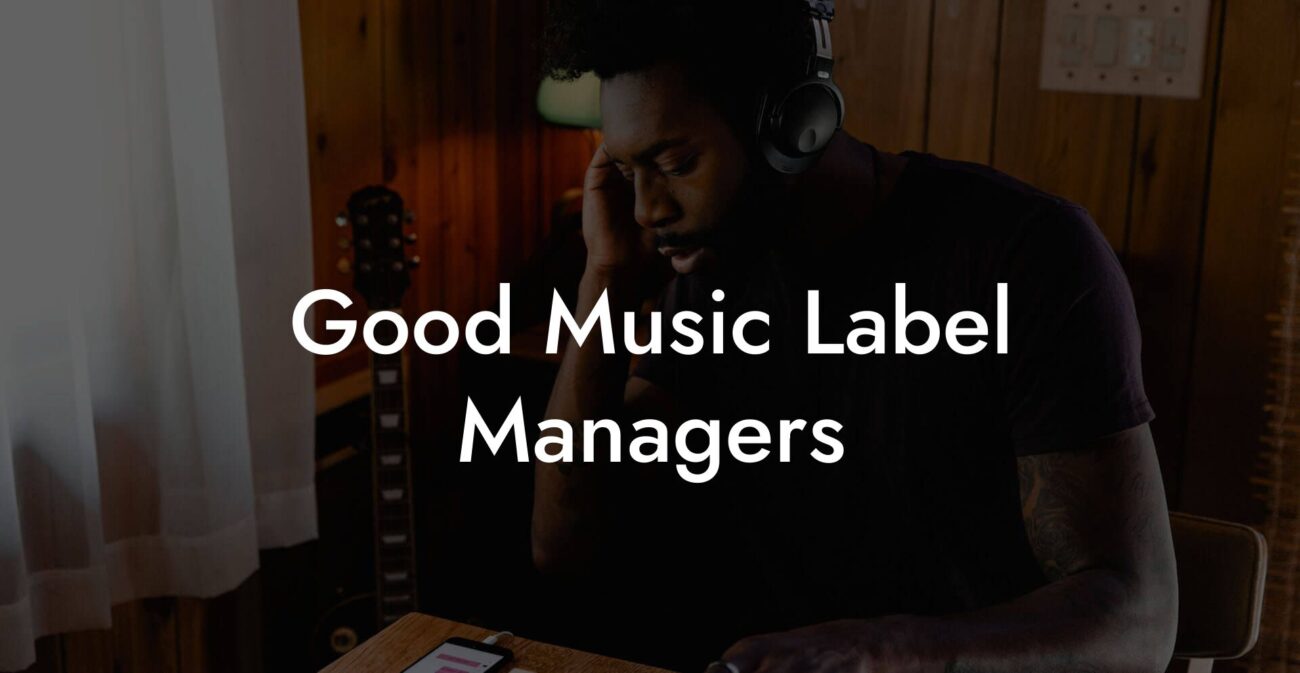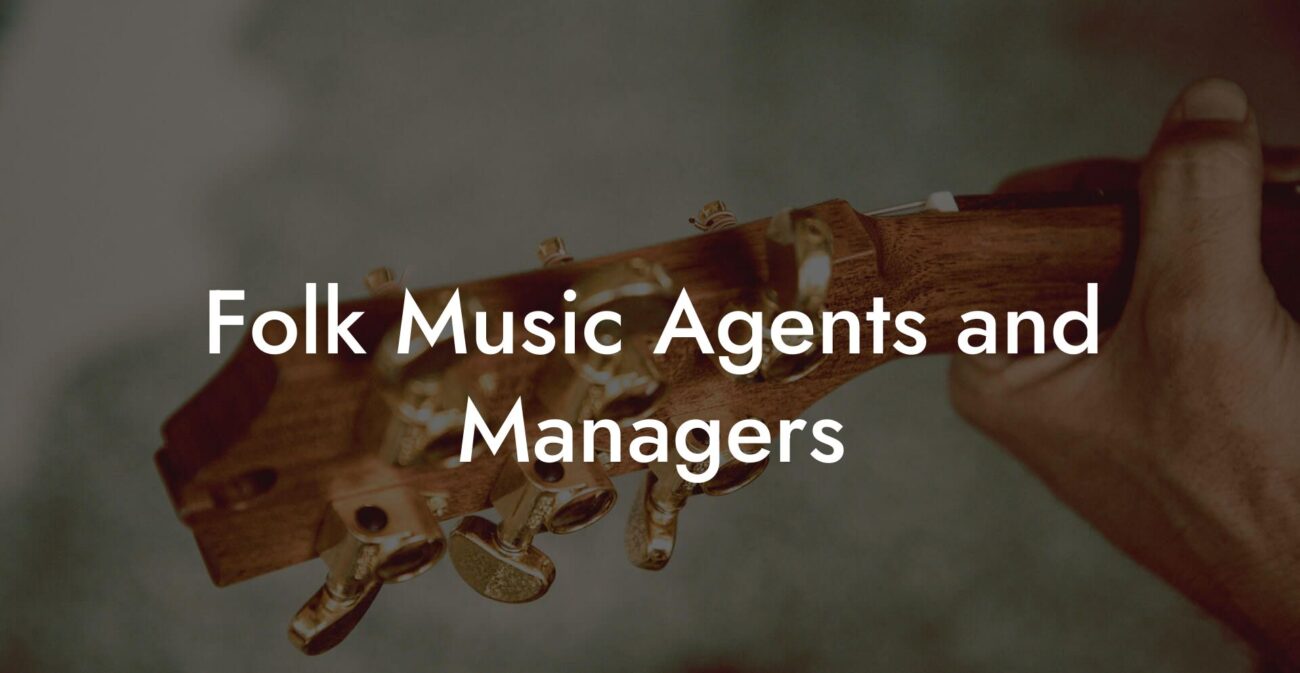Ever wondered how a simple tune can stick in your head for days on end, making you hum it while you’re in the shower or stuck in traffic? Writing a good melody is kind of like crafting the secret sauce of your favorite song—a unique blend of emotion, rhythm, and genius that resonates with listeners. Whether you’re an aspiring songwriter or looking to finally nail that tune you’ve been crafting in your head for months, this ultimate guide is here to break down the art and science behind creating melodies that truly hit home.
Looking to write your next song? Transform your creative ideas into songs that people will love, and skyrocket your music career with Lyric Assistant. The perfect songwriting assistant. Find out more →
Quick Links to Useful Sections
- Understanding the Heartbeat of Your Song: What is a Melody?
- The Essential Elements of a Great Melody
- Pitch and Interval
- Rhythm and Timing
- Repetition and Variation
- Contour and Shape
- Harmonic Context
- Crafting Memorable Melodies: Tips & Techniques
- The Power of Simplicity
- Improvise and Record
- Experiment with Different Tempos
- Use a Variety of Instruments
- Embrace the Art of Silence
- Keep a Melody Journal
- Collaborate and Share Ideas
- Finding Your Unique Sound: Experimentation and Creativity
- Blend Genres
- Play with Unconventional Instruments
- Infuse Personal Experiences
- Break Away from the Expected
- Exploring the Technical Side: Scales, Chords, and Harmonies
- Scales and Modes
- Chord Progressions
- Voice Leading and Counterpoint
- Rhythmic Variation
- The Role of Lyrics in Enhancing Your Melody
- Tools and Techniques for Melody Creation
- Digital Audio Workstations (DAWs)
- Mobile Apps and Plugins
- Voice Recording and Looping Devices
- Collaborative Platforms
- Overcoming Creative Blocks: Keeping the Melody Flowing
- Change Your Environment
- Listen Actively
- Set Small Goals
- Unplug and Recharge
- Exploring Genre-Specific Melodic Techniques
- Pop Melodies
- Rock and Alternative
- Hip-Hop and R&B
- Electronic and Experimental
- Resources and Community Support: Your Next Steps
- Personalizing Your Creative Process
- Create a Dedicated Workspace
- Develop a Routine
- Mix Structured Practice with Free Play
- Reflect and Revise Regularly
- Case Studies: Real-Life Journeys to Memorable Melodies
- Case Study 1: The Accidental Catchy Hook
- Case Study 2: Blending Genres for a Unique Sound
- Case Study 3: Overcoming Creative Blocks with Community Feedback
- Your Journey to Musical Excellence
- Frequently Asked Questions about Writing a Good Melody
- The Road Ahead: Embracing Your Melodic Journey
Understanding the Heartbeat of Your Song: What is a Melody?
At its core, a melody is the musical line that carries the emotion and essence of your song. It’s the part you find yourself constantly humming, the tune that sticks even after the music stops. Think of it as the narrative of your song—a sequence of musical notes woven together to form a memorable musical idea. In a way, your melody is like a character in your story, with its own personality, mood, and journey.
Melodies can be simple or complicated, playful or melancholic, but no matter what style they lean toward, a truly good melody has the power to evoke feelings and ideas simply through its progression. It’s the blend of rhythm, pitch, and timbre that draws listeners in and invites them on an emotional rollercoaster.
When diving into melody writing, consider what you want to say with your tune. Is it a love song, a protest anthem, or maybe a reflective ballad? Getting clear on the message of your song is the first step in designing a melody that doesn’t just sound good, but also speaks to your audience’s heart.
The Essential Elements of a Great Melody
Writing a good melody isn’t about following a strict formula—it’s more about understanding the fundamental components that make a tune both interesting and emotionally engaging. Let’s break down the building blocks:
Write Lyrics Like a Professional Songwriter
The ultimate songwriting tool that takes your creative vision to the next level! With just a few clicks, you can unleash your inner songwriter and craft a hit that's uniquely yours. Your song. You own it.
Pitch and Interval
Every melody is made up of pitches, and the way these pitches relate to each other is called intervals. The shift from one note to the next can be large or small, and these leaps can create excitement or offer a gentle progression. Experiment with different intervals to see how shifting the distance between notes changes the mood of your melody.
Rhythm and Timing
A melody isn’t just a series of notes placed side by side; it has a rhythm, a timing that gives it a particular flow. The pattern of long and short durations helps set the pace and groove of your tune. By playing with syncopation (unexpected beats) and steady repetitive patterns, you can push your melody from being mechanical to wonderfully infectious.
Repetition and Variation
One secret to a memorable melody is repetition. The human brain loves familiarity—a catchy hook repeated at just the right intervals makes your tune easily recognizable. However, it’s equally important to introduce variation, whether through slight alterations in rhythm or a change in pitch, which keeps your listener engaged and intrigued.
Contour and Shape
Imagine your melody as a path, with highs and lows that give it a distinct shape. A well-shaped melody typically has an arc—starting gently, rising to a peak, and then easing back down. This contour not only adds emotional depth but also helps in creating a sense of direction in your music.
Harmonic Context
While your melody is the star, it often doesn’t operate in isolation. The underlying harmony and chord progression can either support or contradict the mood you’re aiming for. Understanding how to pair your melody with the right chords is key to creating a cohesive musical experience.
Crafting Memorable Melodies: Tips & Techniques
Even the most experienced songwriters sometimes struggle to nail the perfect melody. Here are some tried-and-tested techniques to get those creative juices flowing:
The Power of Simplicity
Sometimes less really is more. Starting with a simple idea—a short musical phrase or a couple of notes—can serve as the seed for a much larger composition. Don’t be afraid to strip things down and let the core idea shine.
Improvise and Record
Grab your instrument or just use your voice, hit record, and let your ideas flow without overthinking. That spontaneous moment of inspiration might just be the spark you need. Later, you can refine and rearrange your ideas into a structured melody.
Experiment with Different Tempos
Changing the speed of your melody can alter its emotional impact profoundly. Try playing around with a faster or slower tempo to see which version resonates better with the vibe you’re aiming for. Sometimes an unexpected twist in tempo adds that extra layer of intrigue.
Use a Variety of Instruments
Different instruments can bring out different colors in your melody. Experiment with a guitar riff one day and a piano sequence the next. This not only enhances your creativity but also broadens your musical palette.
Embrace the Art of Silence
Believe it or not, silence is a crucial part of melody writing. Pauses, rests, and strategic spaces between notes can build tension and highlight the beauty of the sound when it finally comes through. Don’t feel compelled to fill every moment with sound.
Keep a Melody Journal
Much like a writer’s journal, keeping a melody journal can help you capture fleeting moments of inspiration. Write down or record short musical phrases as soon as they come to you. Over time, you might find that these snippets combine to form a breakthrough melody.
Collaborate and Share Ideas
Two heads (or more) are often better than one when it comes to creativity. Don’t be afraid to bounce ideas off fellow musicians or producers. Collaboration can introduce new perspectives and help overcome creative blocks.
Finding Your Unique Sound: Experimentation and Creativity
Your personal experience, cultural background, and even your mood can all influence the melodies you create. Instead of adhering strictly to formulas, allow yourself the freedom to break the rules and experiment. Here are some ideas to unlock your unique musical voice:
Blend Genres
Don’t box yourself into a single genre. Musical innovation often happens at the intersection of different styles. If you’re into pop, why not incorporate elements of jazz, classical, or hip-hop? Mixing genres can result in fresh, unexpected melodies that set you apart from the pack.
Play with Unconventional Instruments
Sometimes, a sound you wouldn’t typically consider musical might spark a new idea. Experiment with everyday objects or electronic gadgets to produce unique sounds. The key is to embrace the imperfections and let them add character to your tune.
Infuse Personal Experiences
The best melodies often come from personal stories and genuine emotions. Reflect on your life experiences, the highs and lows, and translate that feeling into music. A melody rooted in authenticity is far more compelling than one that feels rehearsed.
Break Away from the Expected
Don’t be afraid to take risks. Whether that means abruptly changing the melody’s direction or introducing an unexpected chord, these surprises can breathe life into your music. Remember: the most memorable tunes are often those that defy conventional expectations.
Experimentation is all about trial and error. Allow yourself to play around without the pressure of perfection. Some of your best ideas might emerge from simply letting go and enjoying the creative process.
Exploring the Technical Side: Scales, Chords, and Harmonies
While creativity is the spark that lights up your melody, a solid understanding of musical theory can help you structure and refine your ideas. Here’s a closer look at some technical aspects that can elevate your songwriting:
Scales and Modes
Scales form the foundation of your musical language. Whether you opt for a major scale to evoke a bright, happy feeling or a minor scale for a more introspective vibe, familiarizing yourself with different scales opens up endless creative possibilities. Additionally, exploring modes—variations of traditional scales—can add color and depth to your melody.
Chord Progressions
Much like the background in a painting, chord progressions provide context and support to your melody. Experiment with different progressions to see how they influence the mood of your tune. A classic I–IV–V progression might offer a comforting familiarity, while alternative sequences can create tension and surprise.
Voice Leading and Counterpoint
When multiple musical lines interact, the art of voice leading ensures that each part flows smoothly to the next. Learning basic counterpoint techniques can help you write melodies that move gracefully around each other, creating layers of sound that keep your listeners engaged.
Rhythmic Variation
Even within the structure of scales and chords, rhythm is your playground. Experiment with off-beat accents, dotted notes, or even polyrhythms to give your melody a fresh twist. The interplay between rhythm and pitch can transform a simple tune into an intricate musical tapestry.
The Role of Lyrics in Enhancing Your Melody
While this guide is all about crafting killer melodies, it’s impossible to ignore the magnetic synergy between melody and lyrics. Even if you’re not a lyricist by trade, understanding how words interact with music can shape your approach to melody writing.
Lyrics provide context and narrative—when paired with a great melody, they can intensify the emotional impact of a song. Consider how the cadence and rhythm of your lyrics can complement the musical phrases you create. For instance, if your lyrics have a conversational flow, your melody might benefit from a more relaxed, speech-like quality. Conversely, tight, rhythmic lyrics might inspire you to create a melody with punchy, syncopated beats.
When you’re working on your melody, try singing your lyrics along with it—even if it feels awkward at first. This can help align the natural rhythm of your words with the musical structure and ensure that your song flows seamlessly from start to finish.
Tools and Techniques for Melody Creation
In today’s digital age, there’s no shortage of tools to help you experiment and refine your melodies. While the creative mind is your best instrument, using modern aids can streamline the process and open up new avenues of inspiration.
Digital Audio Workstations (DAWs)
Whether you’re a seasoned producer or just starting out, DAWs like Ableton Live, FL Studio, or Logic Pro are invaluable for recording and editing your musical ideas. They allow you to experiment with different sounds, layer multiple tracks, and fine-tune your melody with precision.
Mobile Apps and Plugins
There are plenty of mobile apps designed specifically for on-the-go melody creation. These tools let you experiment with chord progressions or simply record a quick idea that hits you out of nowhere. For those who love tweaking sounds, plugins and virtual instruments can add exciting textures and effects to your melody.
Voice Recording and Looping Devices
Sometimes, the first draft of your melody is just an improvised hum or a few spontaneous lyrics. Using a voice recorder or a looping pedal can capture these raw moments of genius that you can later refine into a polished musical line.
Collaborative Platforms
Don’t underestimate the power of connecting with other musicians online. Platforms that allow you to share and collaborate can help you gain fresh perspectives on your melody and even spark new ideas you might not have considered on your own.
Overcoming Creative Blocks: Keeping the Melody Flowing
Every songwriter faces creative blocks—those frustrating moments when the melody just won’t come together. Here are a few tips to break through these challenges and keep your creativity flowing:
Change Your Environment
Sometimes, a change of scenery is all you need. Take a walk, visit a new café, or simply rearrange your workspace. A fresh environment can stimulate your creativity and open your mind to new ideas.
Listen Actively
Dive into your favorite songs, but this time, try to analyze what makes their melodies effective. Jot down ideas or patterns that resonate with you. This practice can spark inspiration for your own work.
Set Small Goals
Instead of pressuring yourself to write a complete melody in one go, set manageable tasks. Start with a single phrase or beat, and build upon it gradually. Breaking the process into steps can make the challenge feel less overwhelming.
Unplug and Recharge
Sometimes stepping away from your work can do wonders. Give yourself permission to take a break—do something fun, have a laugh with friends, or engage in a totally different creative activity. You’ll be surprised how often inspiration strikes after a little downtime.
Exploring Genre-Specific Melodic Techniques
Different genres often demand different approaches to melody writing. Whether you’re venturing into pop, rock, hip-hop, or even experimental electronic music, understanding the tonal quirks of your chosen genre can help refine your creative process.
Pop Melodies
Pop music is often characterized by catchy hooks, clear structures, and memorable choruses. When writing pop melodies, focus on simplicity and repetition while incorporating innovative twists that set your tune apart.
Rock and Alternative
In rock music, the melody might be rougher around the edges—think bold guitar lines and raw, emotional vocals. Don’t be afraid to experiment with distortion or unconventional scales to capture the edgy vibe.
Hip-Hop and R&B
Melodies in hip-hop and R&B sometimes rely on subtle, soulful lines that emphasize rhythm and groove over traditional musicality. Layering vocal samples or blending harmonies can add depth and flair to your melodic ideas.
Electronic and Experimental
For electronic or experimental genres, sound design plays a huge role. You can break away from conventional notes and explore synthesized sounds, creating melodies that are as much about texture as they are about tune. Let the digital playground inspire you to experiment with novel soundscapes.
Resources and Community Support: Your Next Steps
Becoming a maestro of melody doesn’t have to be a solo journey. There’s a whole world of resources and creative communities out there ready to support your musical endeavors. From online tutorials and interactive forums to workshops and local jam sessions, connecting with fellow songwriters can provide valuable insights and inspiration.
Consider joining songwriting groups on social media platforms, attending music production webinars, or even enrolling in online courses dedicated to music theory and composition. Platforms like YouTube, specialized blogs, and music schools offer endless content that dives deep into the art of melody writing.
If you’re looking for a digital assistant to help you refine your lyrics in perfect harmony with your melody, don’t forget to explore Lyric Assistant. While its primary focus is on aiding musicians in effortlessly writing lyrics, the inspiration and creative support it offers can be just the catalyst you need to take your melody to the next level.
Embrace the community—collaborate, share your work for constructive feedback, and evolve as a songwriter. Remember, every melody starts as just a small spark that grows into a brilliant, unforgettable tune.
Personalizing Your Creative Process
No two songwriters are the same, and your process should reflect your unique style and personality. Experiment with different techniques and workflows until you find what feels most natural for you. Here are a few ideas to consider as you develop your personalized approach:
Create a Dedicated Workspace
Whether it’s a corner of your room or a local cozy café, having a dedicated space for your musical exploration can help cue your mind into creative mode. Fill it with your favorite instruments, inspirational quotes, or anything that fuels your passion.
Develop a Routine
Consistency is key in nurturing creativity. Try setting aside specific blocks of time each day to focus solely on melody writing. Over time, this routine will help you build momentum and overcome creative inertia.
Mix Structured Practice with Free Play
Balance technical exercises—like practicing scales or chord progressions—with unstructured jam sessions. This mix of discipline and spontaneity encourages both skill development and creative breakthroughs.
Reflect and Revise Regularly
Keep a log of your creative sessions. Reflect on what worked, what didn’t, and why certain melodies resonated with you. Revisiting your earlier drafts might reveal hidden gems or spark an idea for improvement.
Over time, as your audition of sounds grows richer and more diverse, your personalized process will become a finely tuned engine for creating the melodies that define your musical identity.
Case Studies: Real-Life Journeys to Memorable Melodies
Let’s take a look at a few real-life examples that illustrate how different approaches led to memorable melodies:
Case Study 1: The Accidental Catchy Hook
Meet Alex, a singer-songwriter who noticed a catchy tune humming in his head one rainy afternoon. Instead of overanalyzing it, he recorded a quick snippet on his phone. Later, while experimenting in his studio, Alex expanded upon that kernel of an idea by playing around with different chord progressions and rhythms. The result was a hook that not only defined his track but also became the highlight of his live performances.
Case Study 2: Blending Genres for a Unique Sound
Sarah, a versatile musician with roots in both classical training and modern pop, decided to experiment by blending intricate piano arpeggios with electronic beats. Through countless late-night sessions and several trial-and-error compositions, she finally found a melody that perfectly captured her eclectic vibe. Her willingness to mix genres not only set her apart but also earned her recognition in diverse musical circles.
Case Study 3: Overcoming Creative Blocks with Community Feedback
David, a budding songwriter, found himself stuck in a creative rut. After joining an online music forum, he began sharing rough ideas and seeking constructive criticism from fellow musicians. The feedback and collaborative spirit lifted his creative energies, leading him to revamp a stale melody into something vibrant and catchy. David’s story is a testament to the power of community when it comes to refining your craft.
These examples show that there’s no one “right” way to write a good melody. Whether it’s a flash of inspiration, a systematic exploration of musical theory, or the supportive feedback of a creative community, the path to a memorable melody is as unique as the song itself.
Your Journey to Musical Excellence
Crafting a melody isn’t just about hitting the right notes—it’s about storytelling, emotion, and the magic of sound. Each time you sit down to write, you have an opportunity to express a piece of your soul through music. Embrace every moment of the creative process, from the initial spark of inspiration to the final refined melody.
Remember, every songwriter has faced moments of doubt and creative block. Yet, with persistence, experimentation, and a willingness to collaborate and learn, you can turn a fleeting idea into a melody that defines you as an artist.
Whether you’re humming a tune in the middle of the night or meticulously plotting out notes on your DAW, trust in your intuition and keep pushing boundaries. Your melody is your personal story, and every unique twist or turn contributes to its authenticity and allure.
So grab that instrument, hit record on your phone, and let your musical journey unfold. Every note you write is a step towards mastering the art of melody creation—your signature sound awaits.
Frequently Asked Questions about Writing a Good Melody
Here are some of the most common questions songwriters have when it comes to crafting unforgettable melodies:
1. What makes a melody memorable?
A memorable melody often combines repetitive hooks with creative variations, a smooth contour, and a rhythm that resonates emotionally with the listener. It’s that perfect balance between familiarity and surprise.
2. How can I overcome creative blocks when writing melodies?
Creative blocks are normal. Try changing your environment, listening to different genres, collaborating with fellow musicians, or even taking a break to let fresh ideas emerge naturally.
3. Do I need advanced music theory knowledge to write good melodies?
While understanding music theory can certainly help refine your ideas, many great melodies come from instinct and experimentation. Start simple, and let your intuition guide you as you gradually learn the techniques.
4. How important is the relationship between melody and lyrics?
The synergy between melody and lyrics is key. A melody that complements your lyrics can amplify the song’s emotional impact, making the message clearer and more memorable.
5. Should I focus on one genre or experiment with different sounds?
Don’t be afraid to explore multiple genres. Experimentation can lead to unique sounds and unexpected breakthroughs in your melody writing. Your personal style will naturally evolve as you blend different influences.
6. How can digital tools help with melody writing?
Digital tools like DAWs, mobile apps, and virtual instruments allow you to experiment, record, and refine your musical ideas efficiently. They’re great for capturing spontaneous inspiration and enhancing your overall production quality.
7. Is it better to write melodies first or lyrics first?
There’s no one right answer—it depends on your creative process. Some songwriters find it easier to start with a melody and build lyrics around it, while others prefer to craft lyrics first and then find a melody that complements the words.
No matter how you approach it, the key is to experiment and find what works best for you.
The Road Ahead: Embracing Your Melodic Journey
Every melody you write, whether a refined masterpiece or a rough sketch of an idea, is a step in your journey to becoming a more compelling songwriter. Embrace the ups and downs of the creative process. Learn from each note, each pause, and each innovative twist in your musical adventure.
Let your passion drive you to experiment fearlessly, collaborate openly, and celebrate the unique melody that only you can create. The magic of songwriting lies not just in the finished product, but in the vibrant process of exploration and self-expression.
As you move forward, remember that every great melody began as a simple idea—a humble note that grew into a symphony of sound through dedication, creativity, and a willingness to take risks. Trust in your creative instincts, continue refining your craft, and let your melodies be the soundtrack to your life’s moments.
Your journey to writing unforgettable melodies is a testament to your passion for music and your desire to create something that resonates long after the final chord. So, get out there, experiment with every tool at your disposal, learn from others and most importantly, have fun on the journey. The world is waiting to hear your sound.
Write Lyrics Like a Professional Songwriter
The ultimate songwriting tool that takes your creative vision to the next level! With just a few clicks, you can unleash your inner songwriter and craft a hit that's uniquely yours. Your song. You own it.













